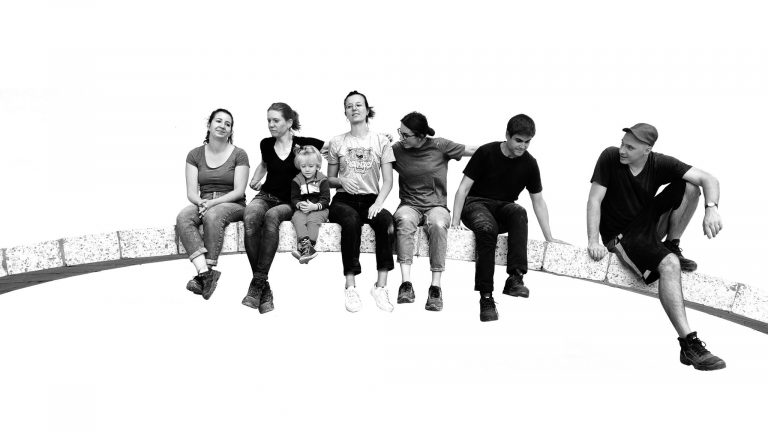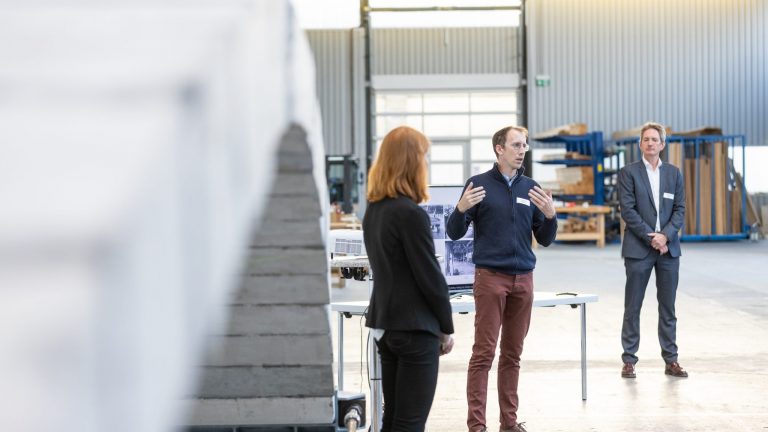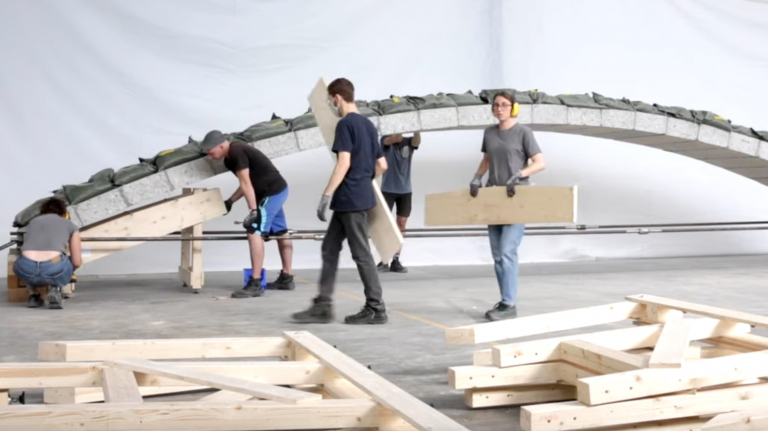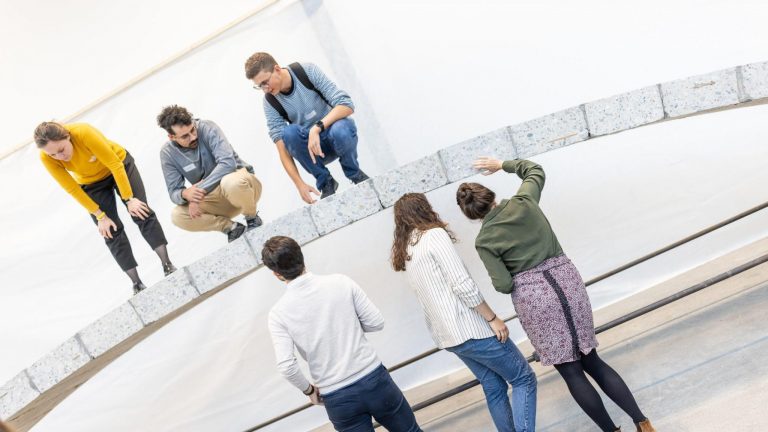reuse of cut concrete

RE:CRETE footbridge prototype
The RE:CRETE footbridge is our prototype serving as a proof-of-concept. Funded by an ENAC Innovation Seed Grant, it uses 25 concrete blocks that were cut from a cast-in-place building currently under renovation in the region. The blocks were then assembled on a centering and with mortar in-between, in order to counteract with the wide variability in the block dimensions, which is characteristic of the reuse approach when compared with traditional manufacturing. Before removal of the centering, the thrust in the 10-m long arch was further increased with two post-tensioning cables running through the blocks centroids.
In terms of life-cycle assessment, the resulting arch provides a new lower-bound of global warming potential, far below any variant made of new material (concrete, steel, or even timber). The prototype also demonstrates that large amounts of concrete waste can be avoided by leveraging its load-bearing capabilities, while achieving a similar structural quality as a newly-produced concrete arch. This prototype opens up new directions to build with reinforced concrete … without pouring concrete.
Re:Crete – Reuse of concrete blocks from cast-in-place building to arch footbridge
About 9% of anthropogenic greenhouse gas emissions worldwide are due to the production of cement, key constituent of concrete. Concrete also contributes to a large share of demolition waste, usually coming from building structures that are discarded because of functional obsolescence rather than of technical deficiency. Current practice for treating end-of-life concrete is to landfill it or crush it into aggregates used in new concrete mixes. Instead, a little-explored strategy consists in extending the service life of concrete elements by reusing them in new constructions. Following this paradigm, this paper presents a proof-of-concept prototype that reuses blocks cut out of obsolete cast-in-place concrete walls for a new structural application: a 10 m-long post-tensioned segmented arch footbridge. The paper details the design, material sourcing, and construction processes while highlighting the unusual features of the approach. The structural behavior is verified with a finite element analysis model and validated by load testing. A comparative life cycle assessment shows that the arch construction presents a significantly lower global warming potential then recycled concrete (−71%) or steel (−74%) alternatives and is very competitive to a timber one (+9%). In conclusion, the project proves the feasibility of a new circular economy application for the construction industry, in which new and reliable concrete structures are built with little to no cement inputs.
Structures
2022-09-01
Vol. 43 , p. 1854-1867.DOI : 10.1016/j.istruc.2022.07.012
Short presentation by Maléna Bastien Masse (April 29th, 2022)
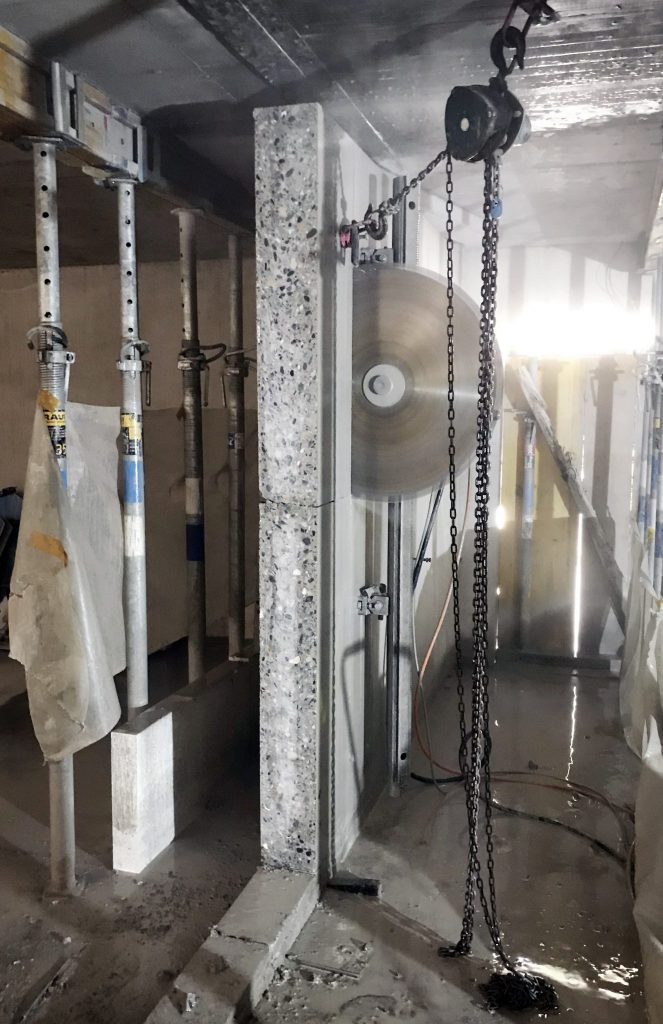
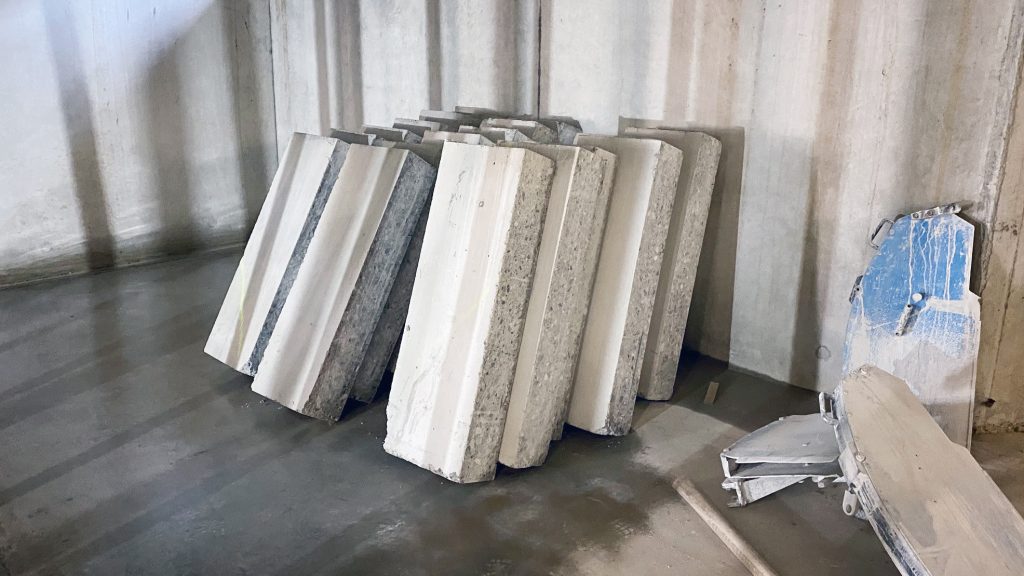
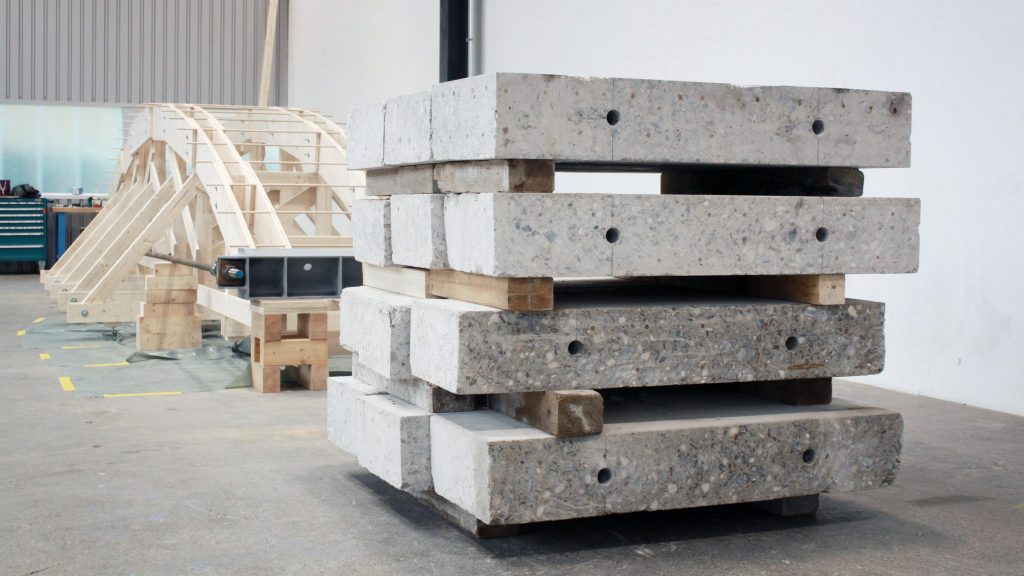

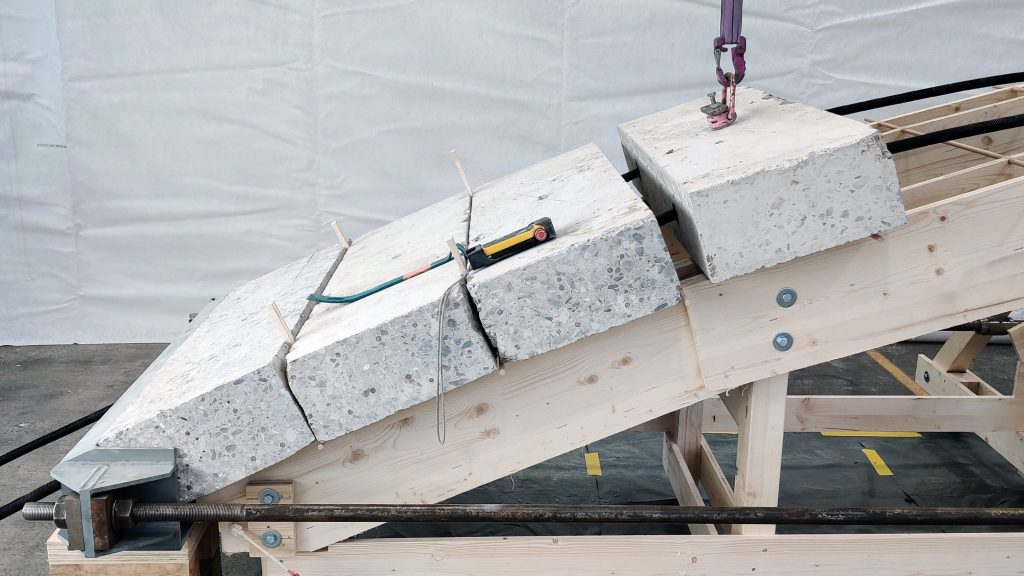

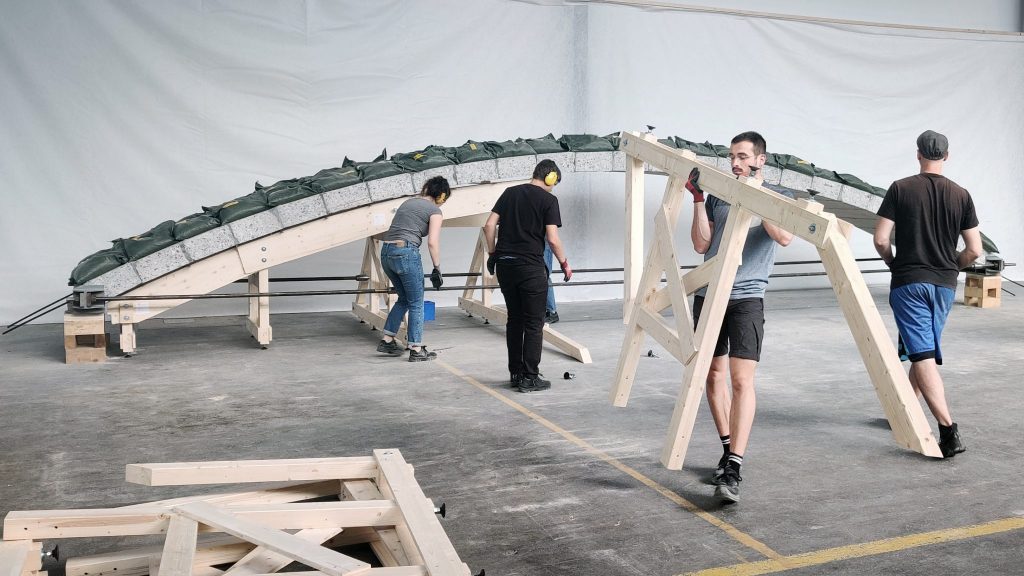
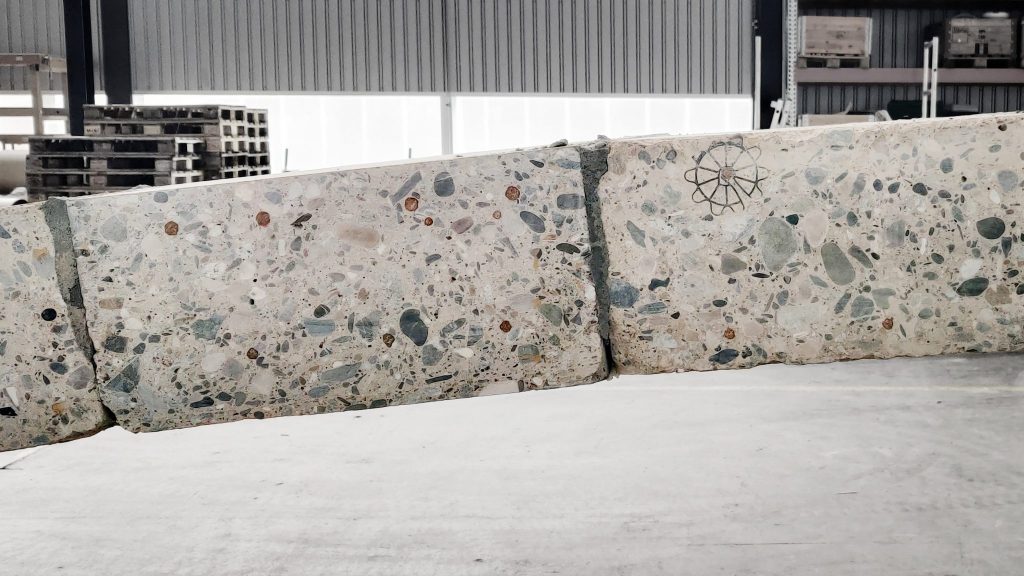
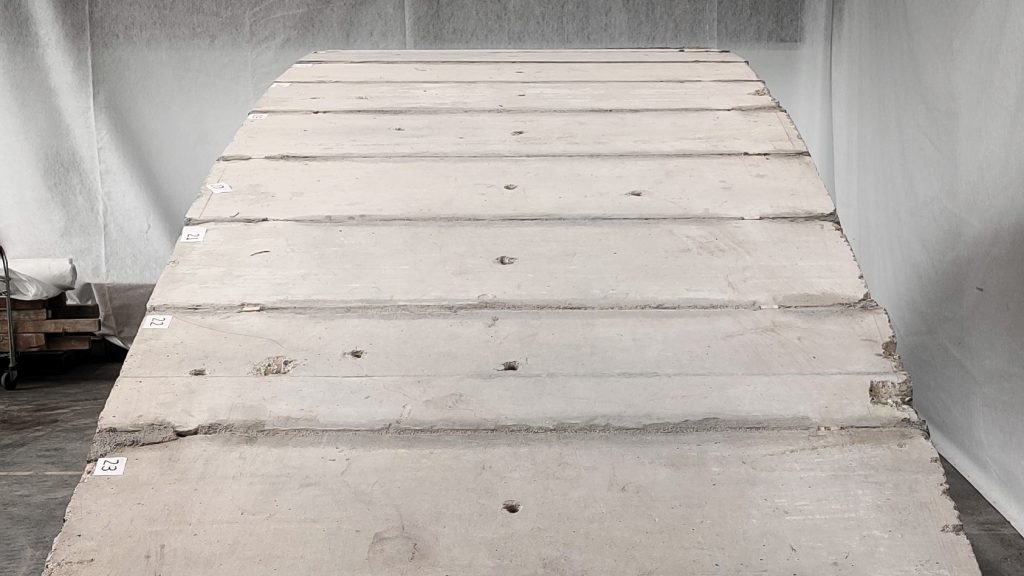
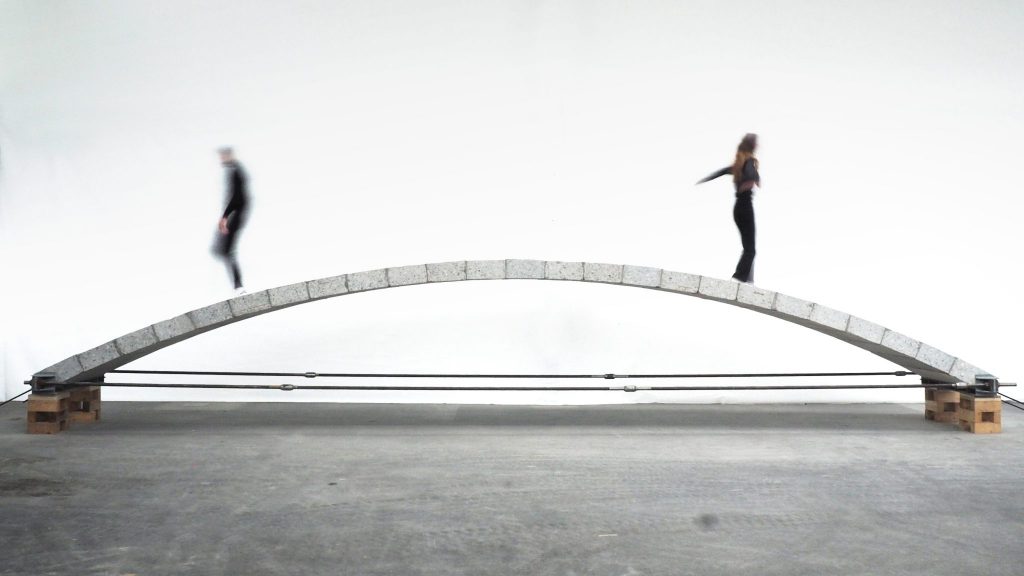
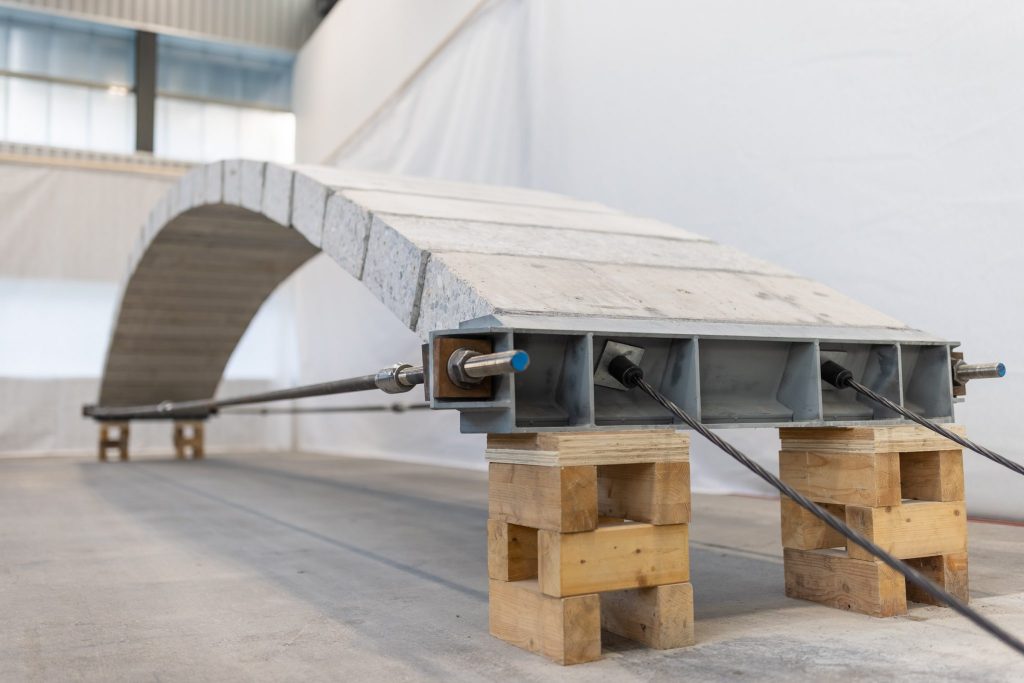
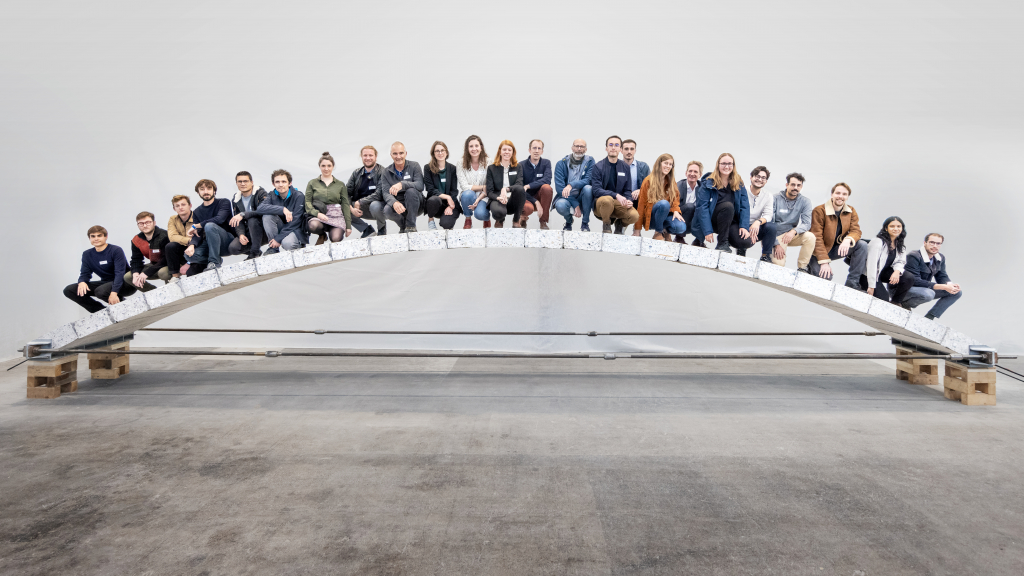

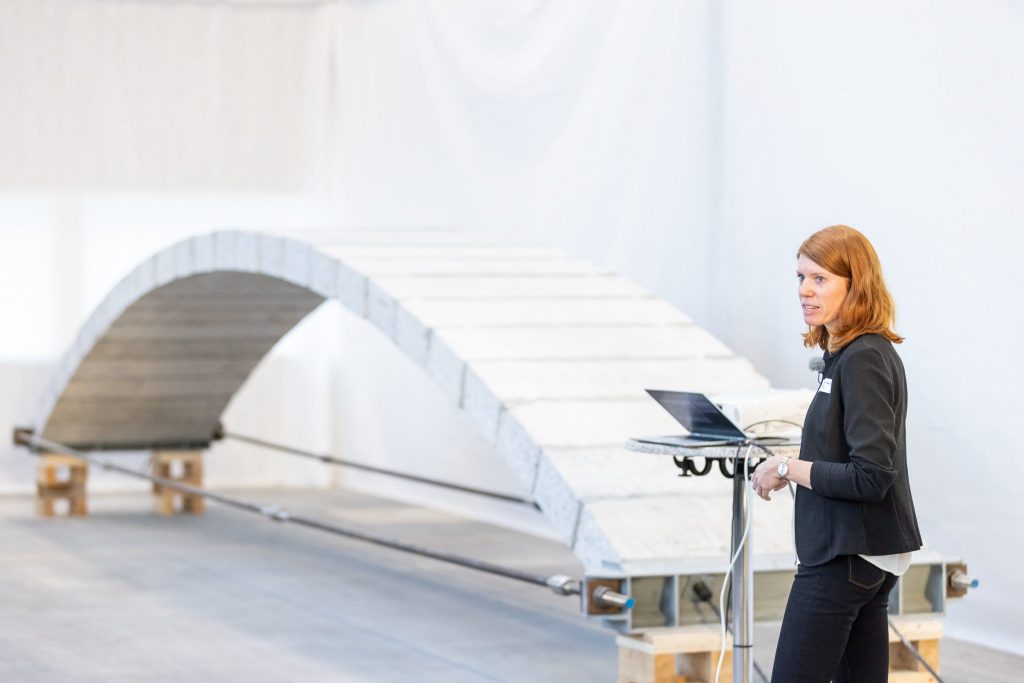
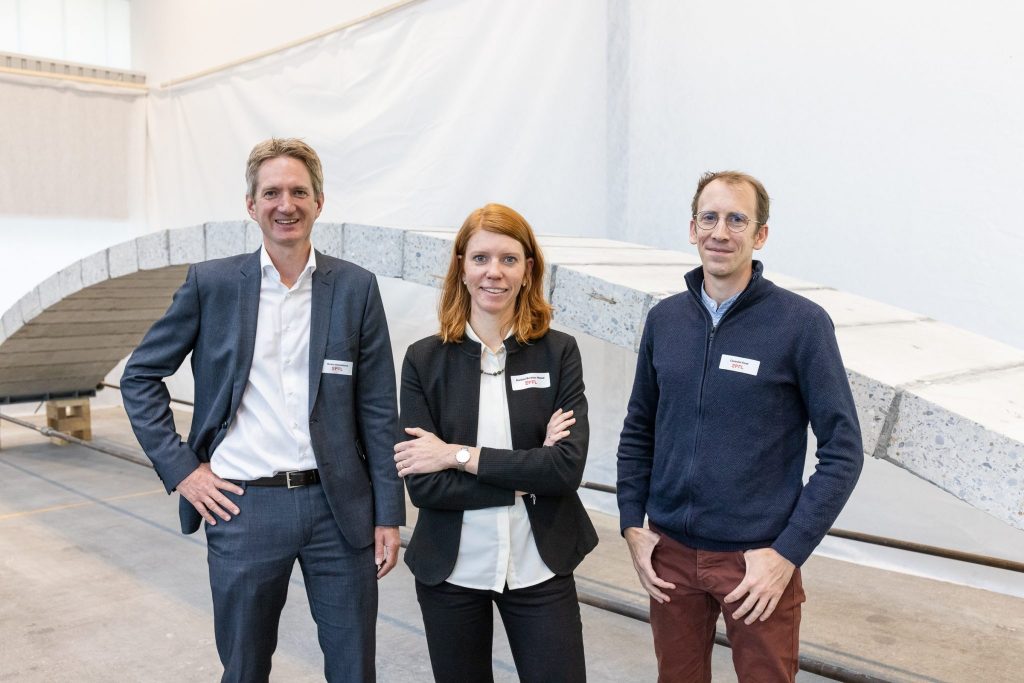
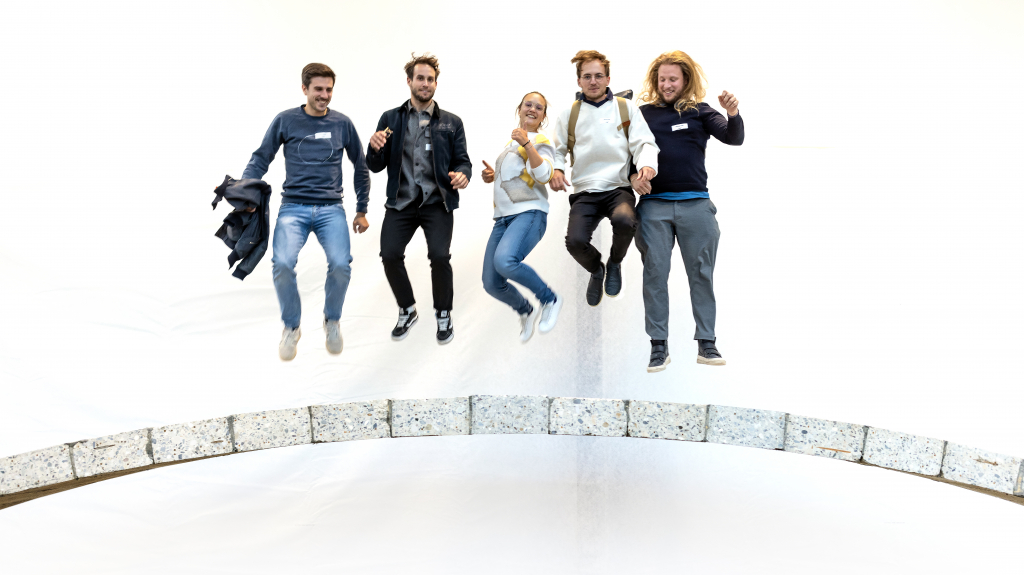
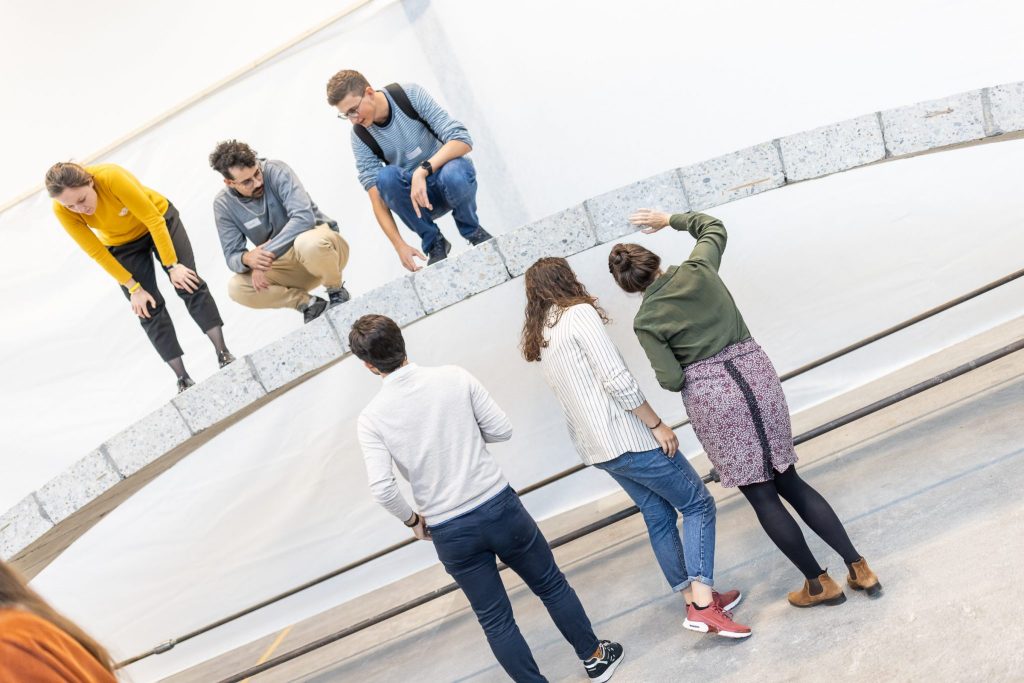

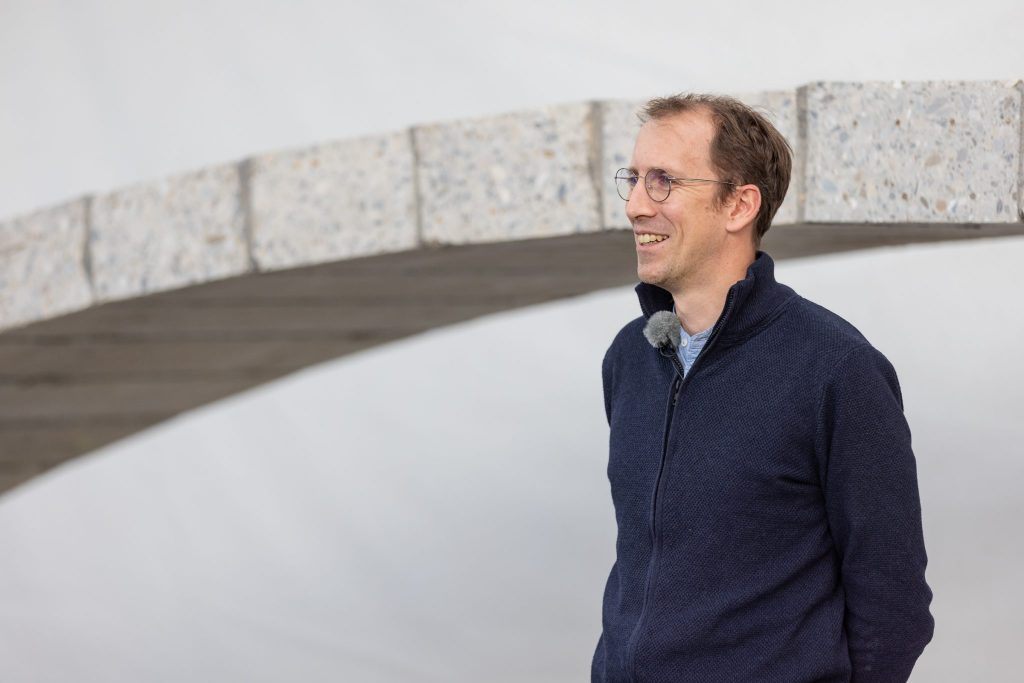
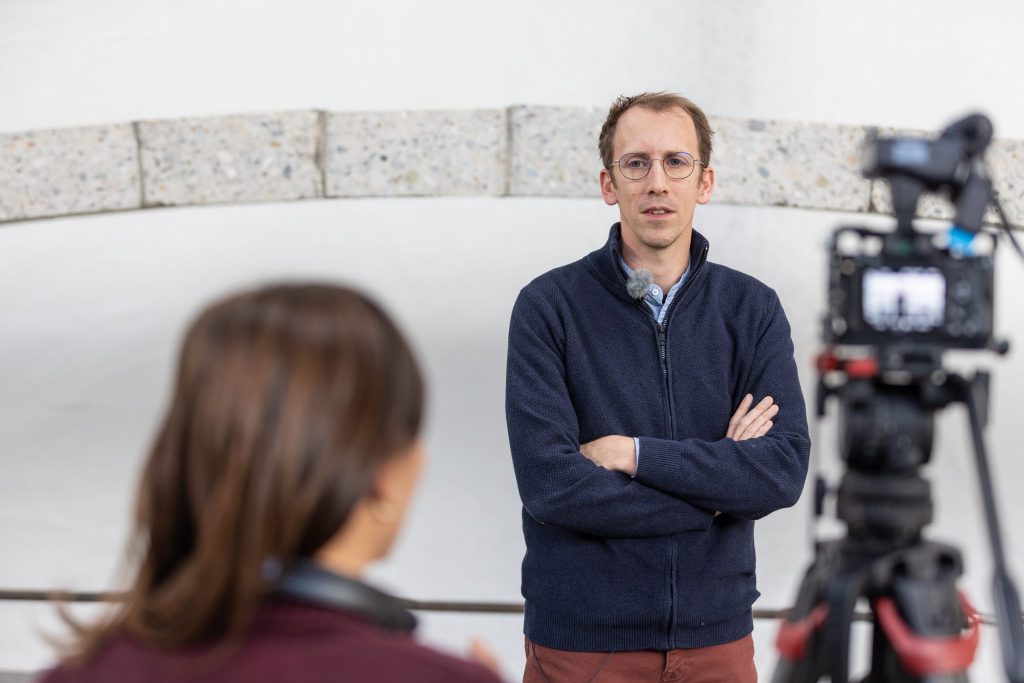
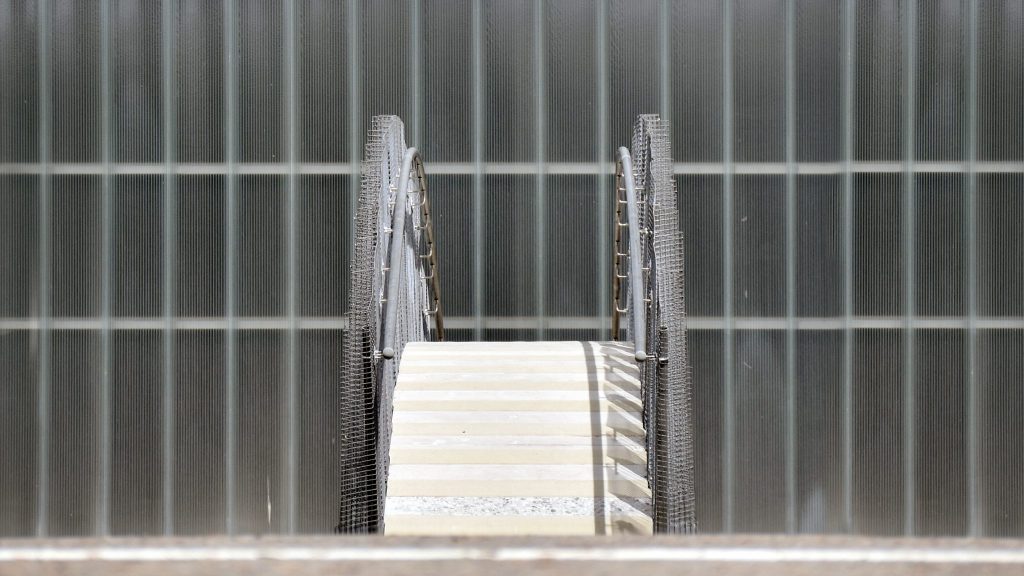
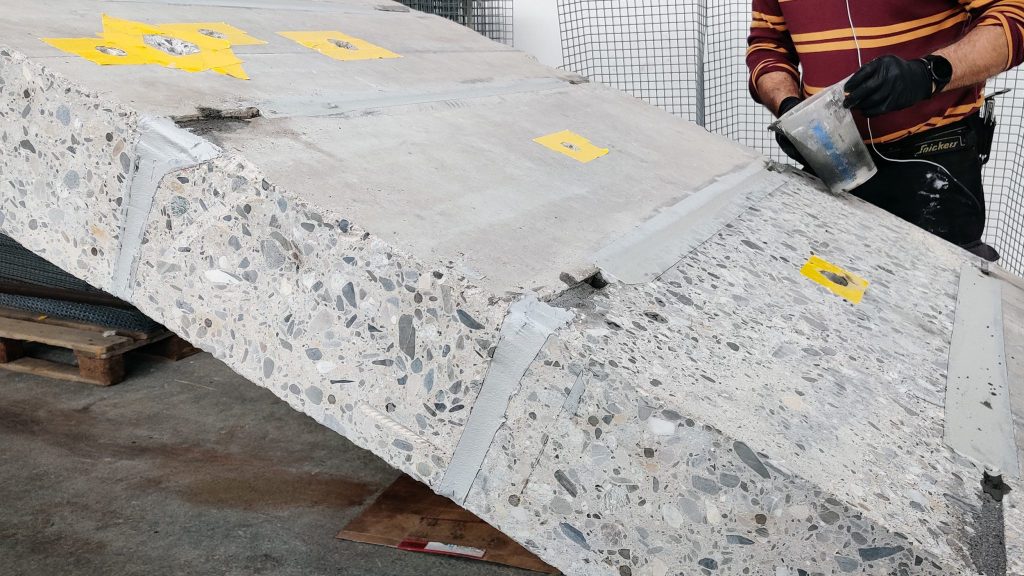
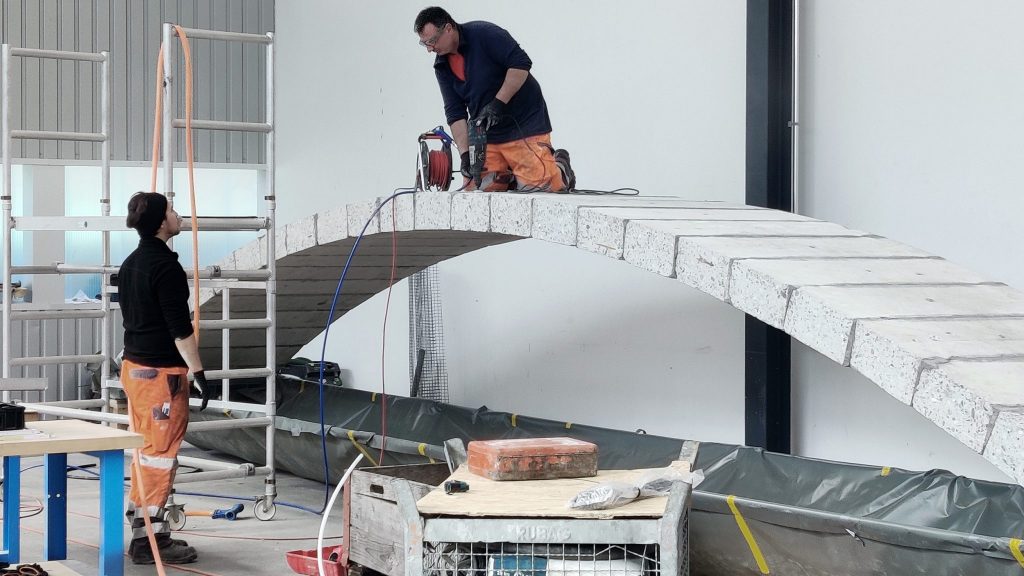
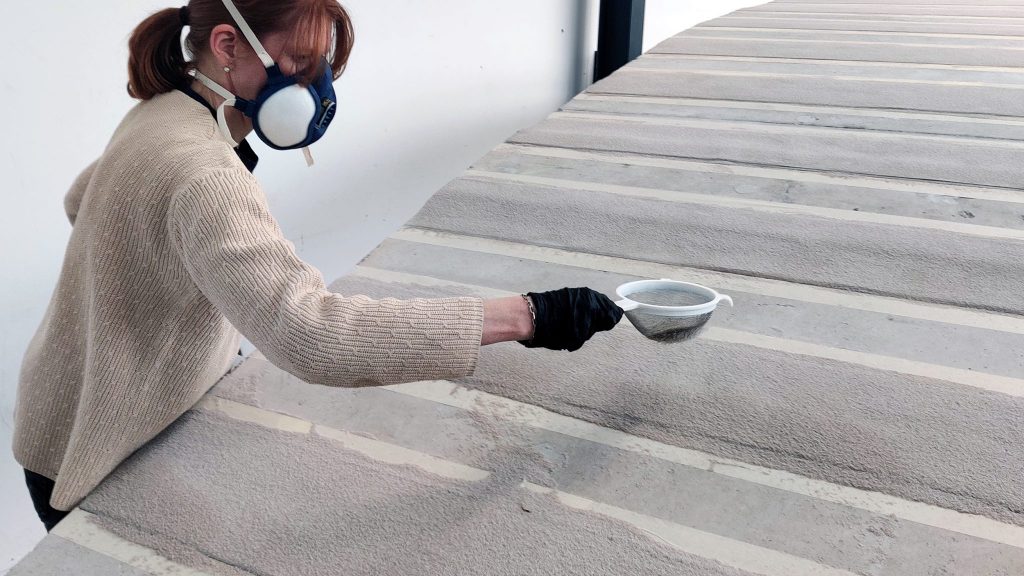
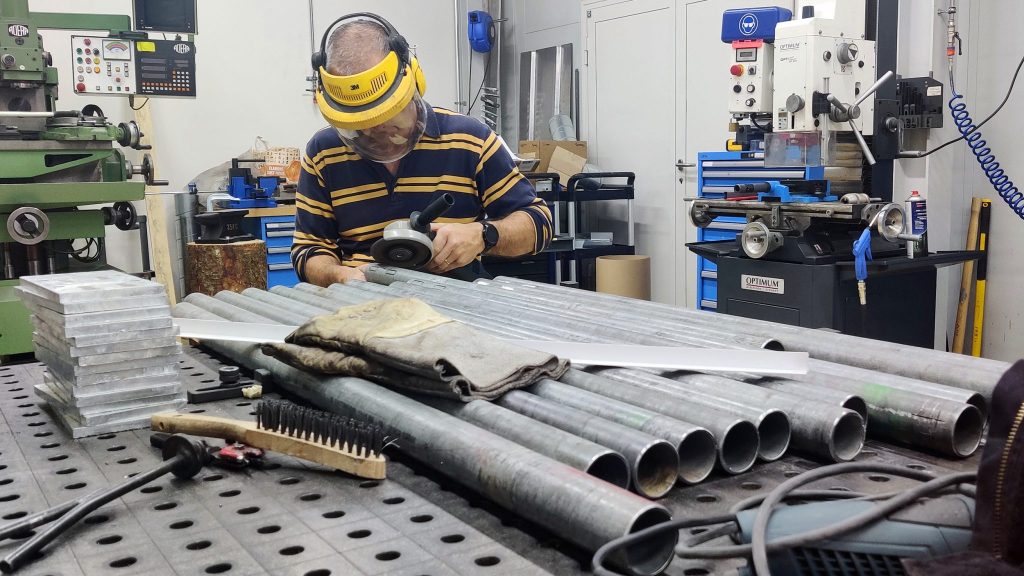
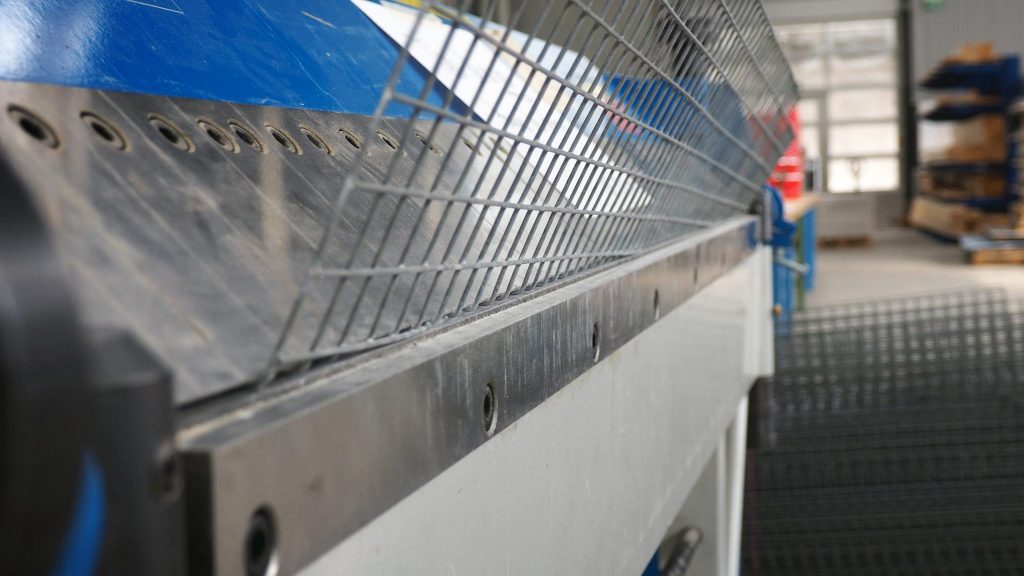
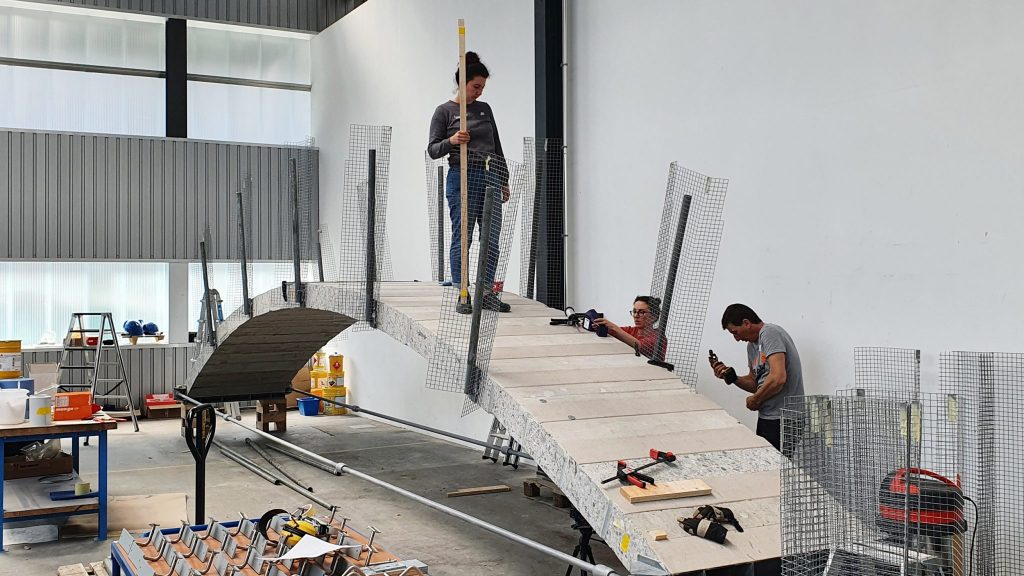
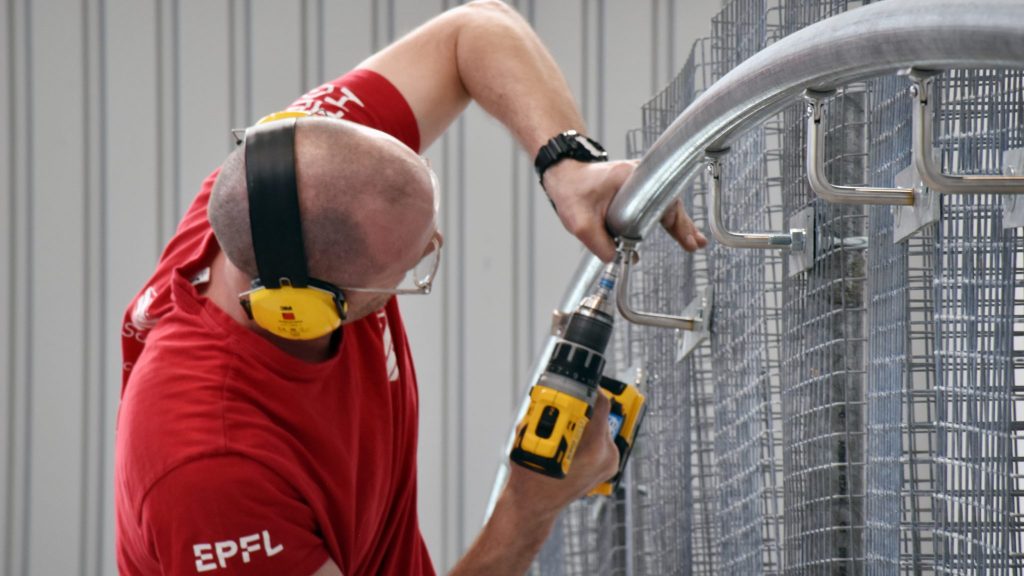
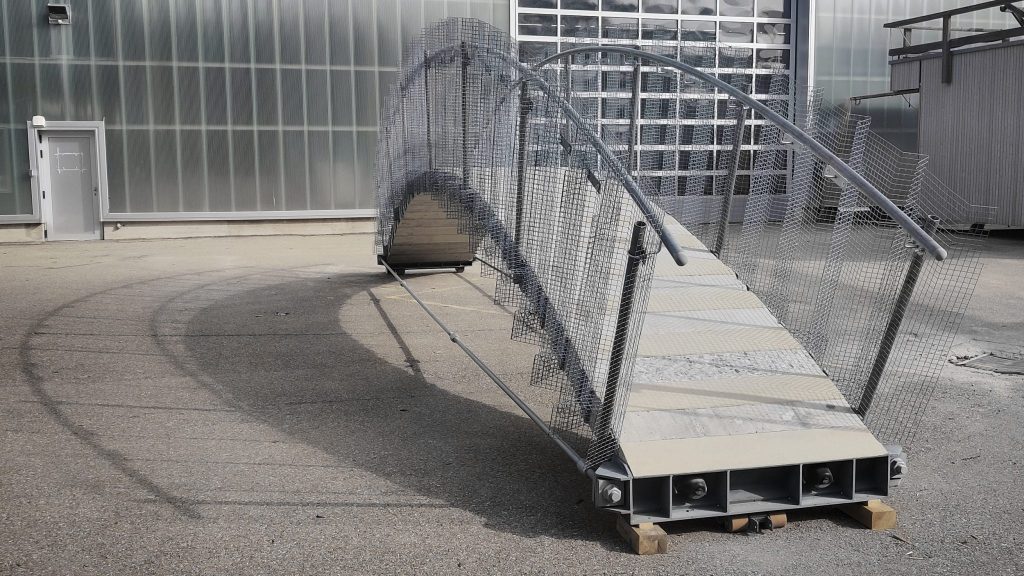
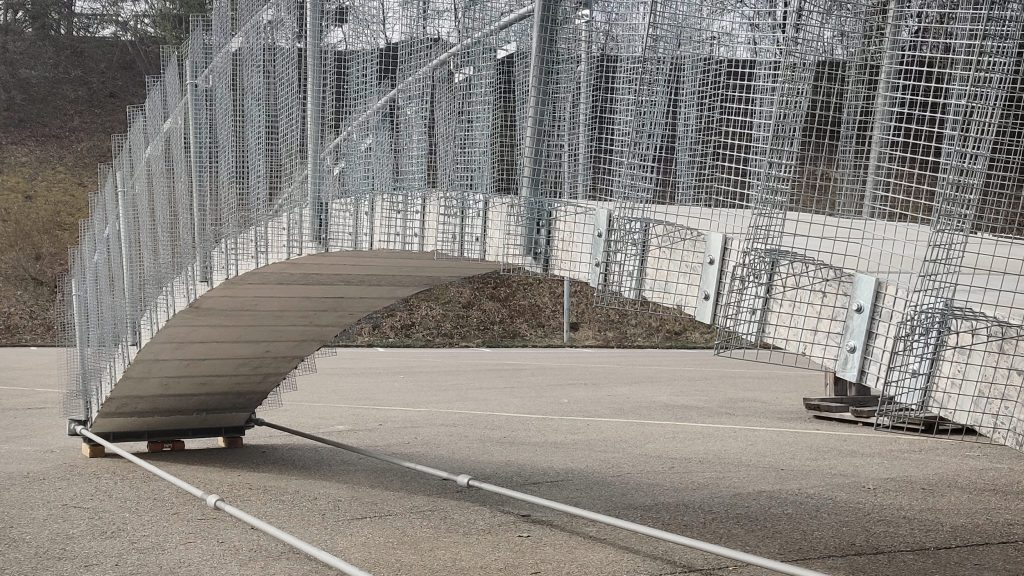
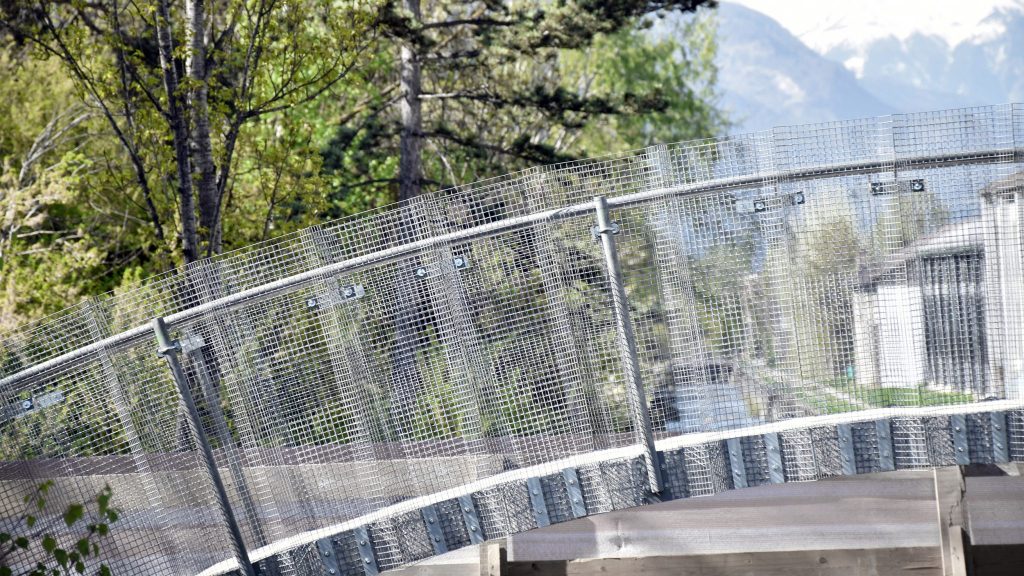
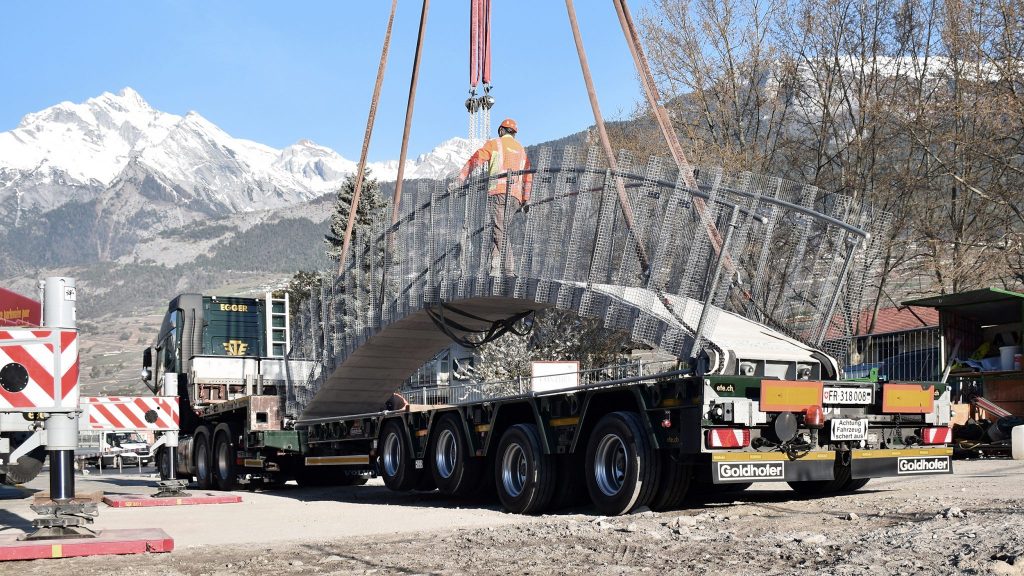
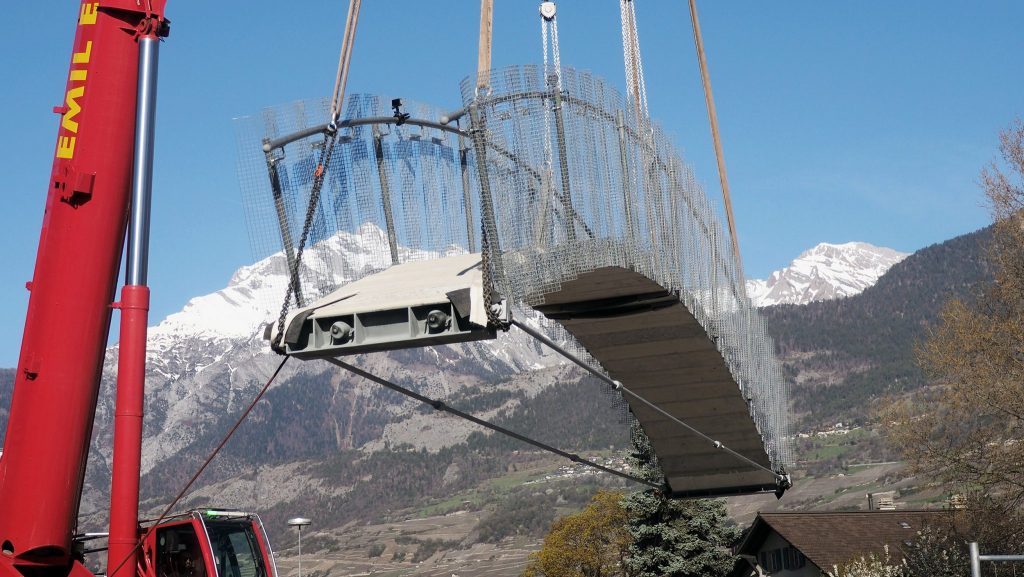
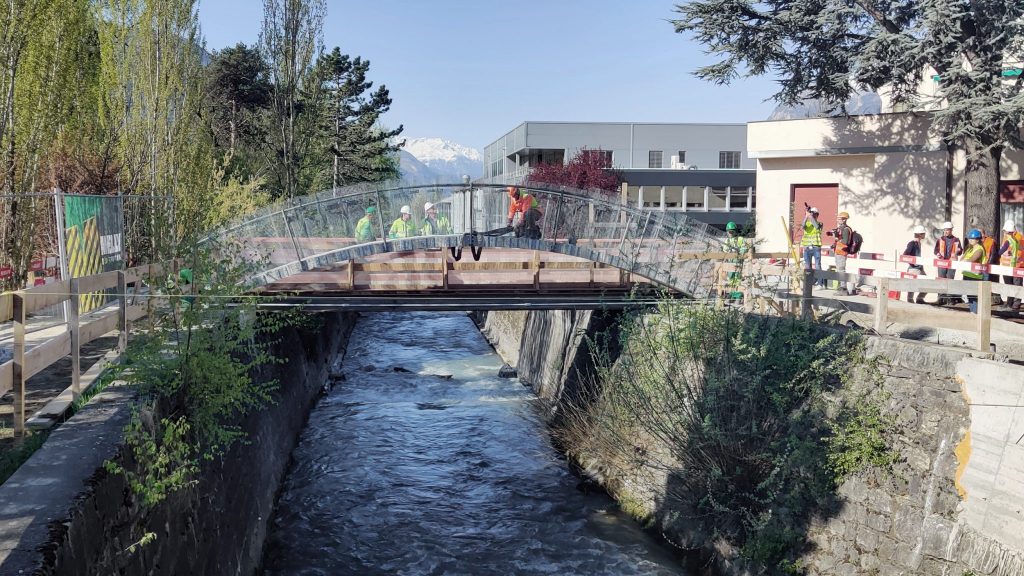
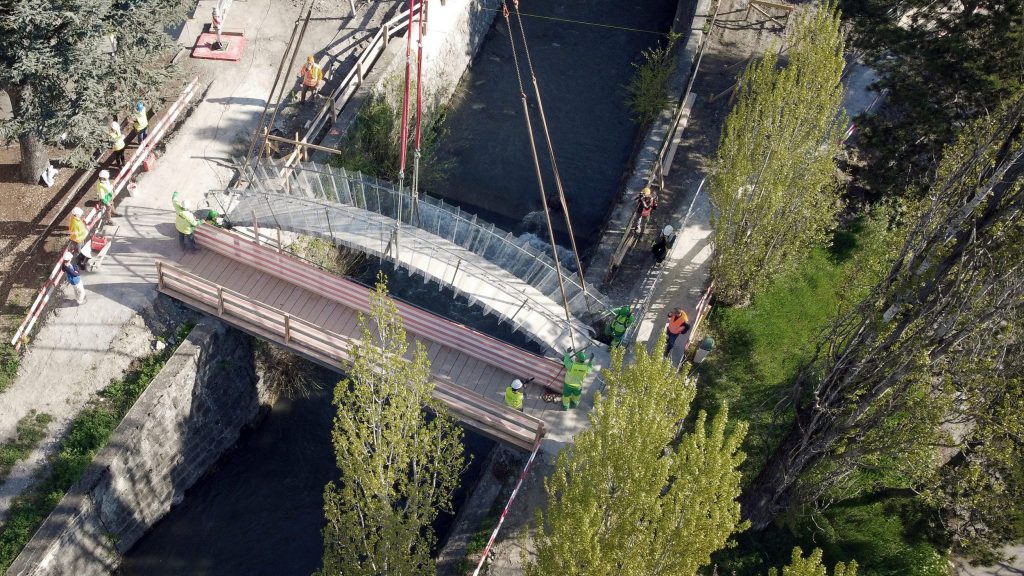
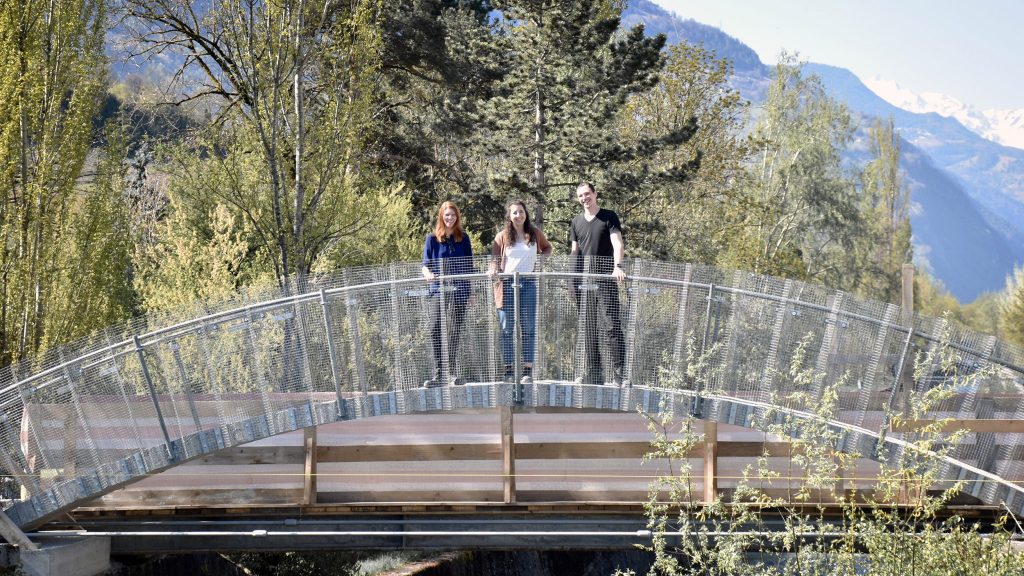
Team:
- design:
- Jan Brütting
- Maléna Bastien Masse
- Julie Devènes
- Maxence Grangeot
- life-cycle assessment:
- Célia Küpfer
- direction:
- Corentin Fivet
- video:
- Maxence Grangeot
- construction support:
- Claude-Alain Jacot
- Barbara Lambec
- Jonas Warmuth
- Raphäel Wegmann
- Xavier Estrella
- Numa Bertola
- Stéphane Pilloud
- Gavin Waddell
- Matias Cesari
- Augustin Pol
Funding:
- ENAC Innovation Seed Grant
- Canton of Wallis, CH
- technical support from the Smart Living Lab
Industrial Partners:
More information will soon be released in scientific literature.
